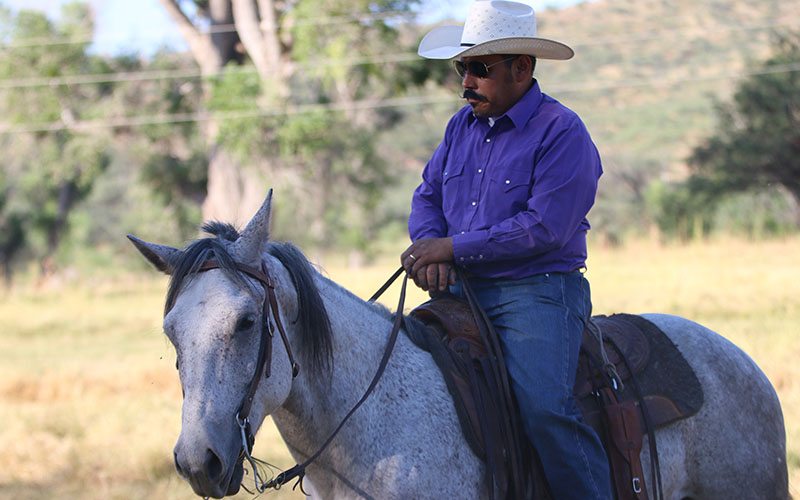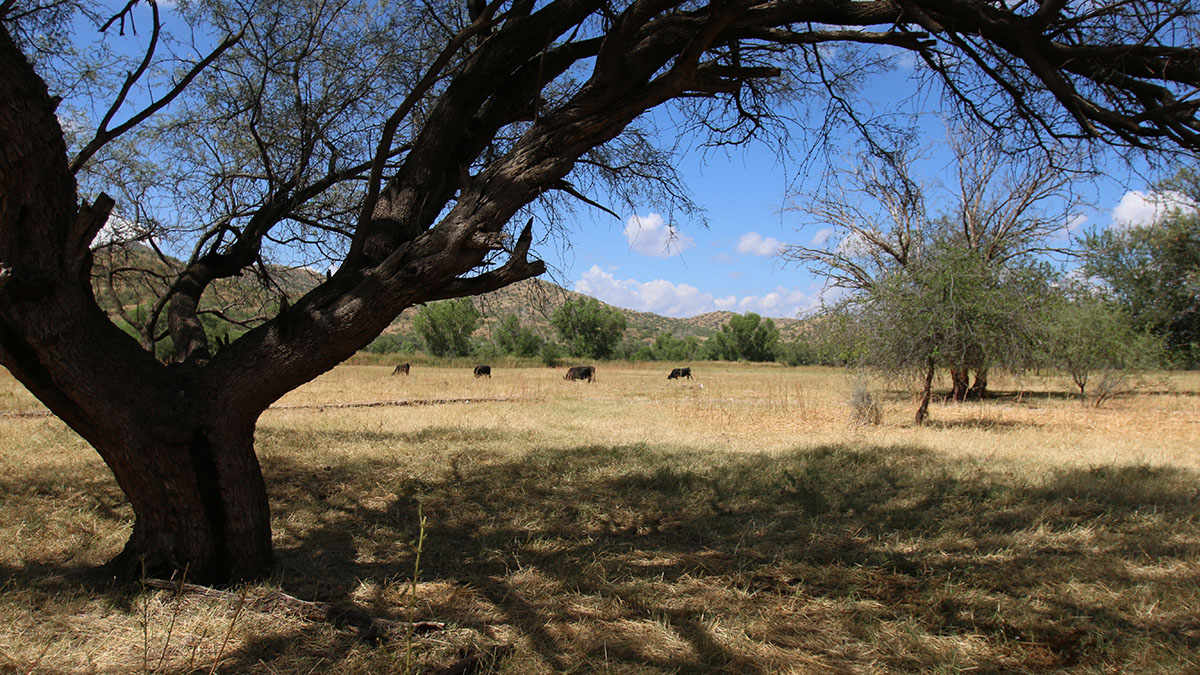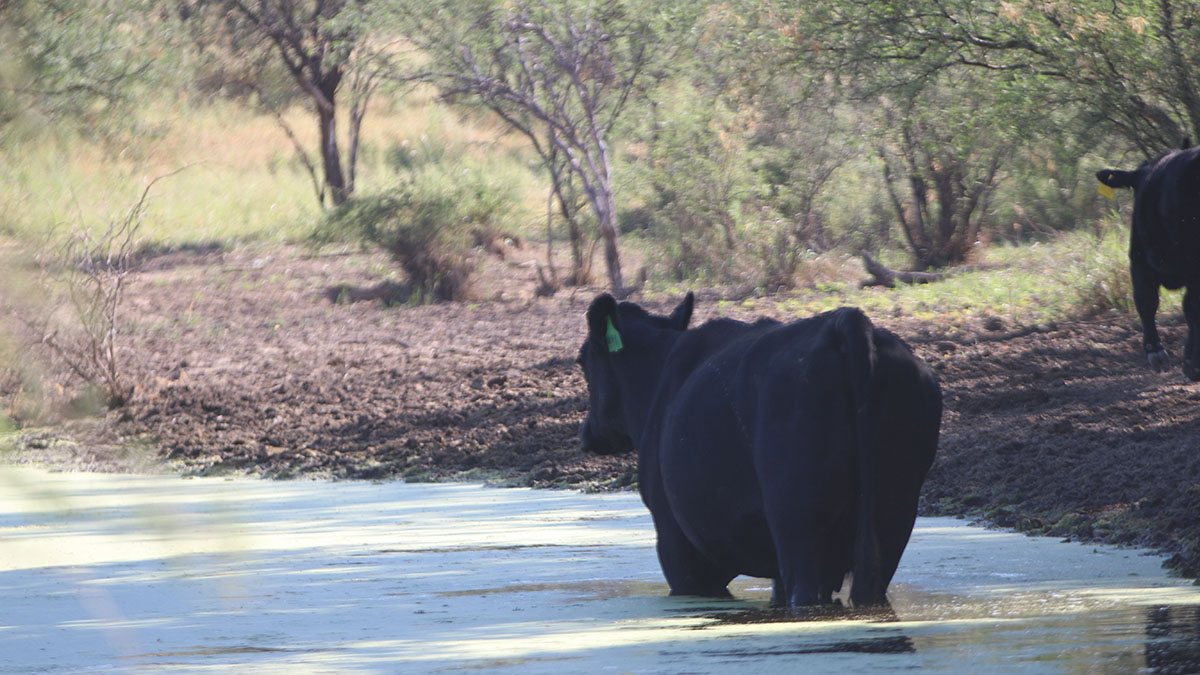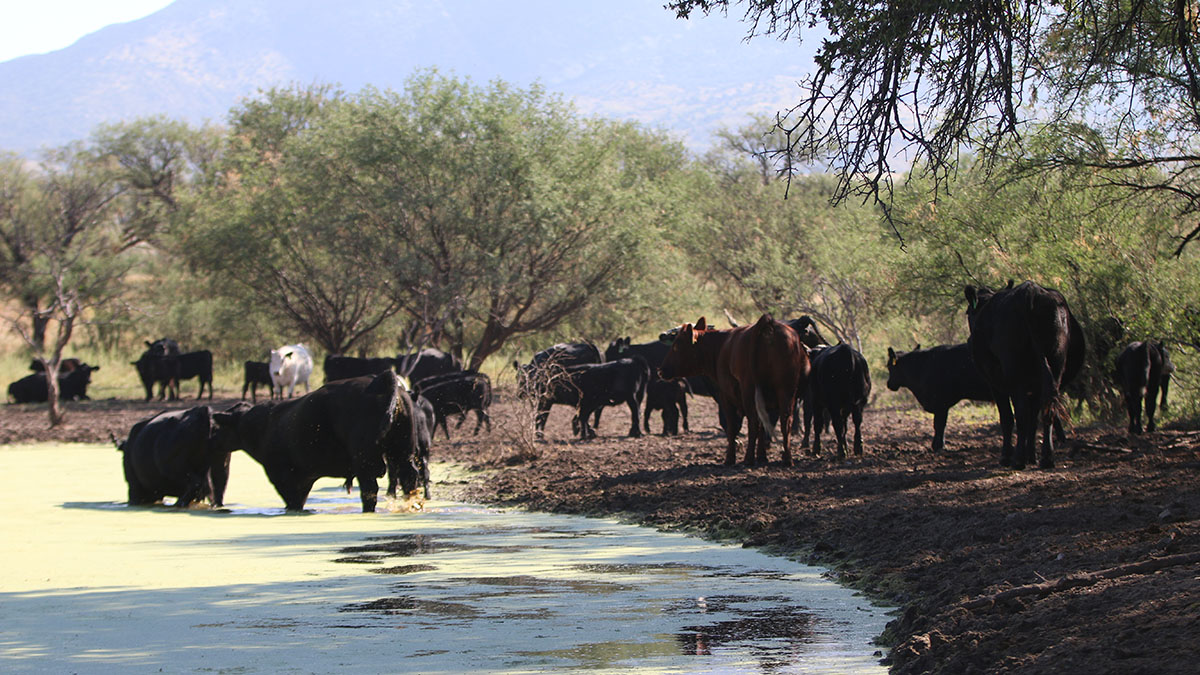
NOGALES, AZ —The road turns from a dusty brown to a deep, red clay along the road to Buena Vista Ranch, where cattle rancher Dean Fish raises commercial cattle.
Green vegetation dots the desert for miles from Fish’s ranch headquarters to the ranch’s edge on the Arizona-Mexico border. Black Angus cattle dip their heads to grab another bite of mesquite.
Fish works to bring sustainable cattle raising from the fringes to the mainstream, conserving water and maintaining pasture health to make the land more productive. He marries those practices with feed efficiency and breeding practices that he says set his system apart from traditional ranching techniques.
“Ultimately, our goal is to produce a safe, wholesome, tasty, nutritious product that’s going to go on America’s dinner plate,” Fish said of cattle ranchers. “So everything that we can do to move toward that goal is going to increase our economic ability to survive and thrive.”
Most days start before sunrise with Fish styling his handlebar mustache and slipping on his cowboy hat. He spends his days driving, riding, mending, breeding, vaccinating and herding cattle. One day he could be on the back of his big, brown horse sorting cattle with his fellow cowboys. The next day he could be out fixing a broken pipe, trading in his pressed Western button-up for a ragged T-shirt.
Fish looks like an iconic cowboy, straight from faded, 19th century photographs. But he represents a cattle ranching system focused on the future.
Three-legged sustainability
For decades, ranchers would herd cattle to wherever they could find grass, damaging the vegetation. That led to a 75 percent decline in cattle in the early 1900s.
Responsible cattle grazing and handling practices were among innovations that spurred industry growth. Now, about 30 million beef cattle are in the U.S.
According to Sarah Place, senior director of sustainable beef production research at the National Cattlemen’s Beef Association, using science and data is key to running more sustainable ranches.
By implementing responsible grazing techniques and breeding an efficient herd, ranchers are producing globally the same amount of cattle as in 1975 with one-third fewer cattle, Place said.
Think of sustainability as a three-legged stool, Fish said, with an economic leg, an environmental leg and a social leg. To start, the practices ranchers use to breed cattle need to be able to support them financially. They need to be able to spend enough money on feed and other expenses such as water and medicine while still turning a profit.
“In the livestock business you’re not going to become wealthy,” said Fish, who has been heading the ranch for five years. “But if you can make a fair living, I think that’s my goal from the economic sustainability standpoint.”
Between the cattle sold, fences and pipes fixed and other expenses, Fish’s annual net income is about $40,000.
Fish says he focuses on breeding cattle with better feed efficiency. He follows the traditional method of grazing cattle with a salt block added occasionally for added nutrition. But he breeds cattle to digest less grass for the amount of beef produced – consume less, produce more. It also means less money spent on feeding resources and fillers.Fish said his father, Ron Fish, taught him to be an environmental steward. He practiced rest-rotation grazing, a common practice among ranchers, but the elder Fish began to document the vegetation in his pastures. Using this data, he would have his cattle graze in areas according to the growing season of each plant to utilize the most vegetation for the cattle while maintaining soil and plant health.
“I want to leave this land in better shape than when I became the caretaker for it,” Fish said.
On the social side of ranching, Fish rides around in his Dodge diesel daily, checking the water tanks, fencing and the state of his cattle.
Fish practices low-stress cattle handling. He moves slowly and quietly to maker the cattle feel at ease.
“We’re making sure that we’re effective in how we move cattle …through our facilities.,” Fish said.
Fish said research has shown that when an animal is stressed its cortisol level goes up and can block the effects of vaccines.
Place said practicing effective stockmanship produces cattle that are less stressed and convert feed more efficiently, creating a better meat product.
Angus is America’s cattle. When someone goes to the grocery store, Fish said, they are looking for that “Certified Angus Beef” label that indicates high quality meat.
Fish builds on Angus’ superior genes by using expected progeny differences, known as EPDs, to estimate the genetic value of an animal. According to the Virginia Cooperative Extension, EPDs are used to compare the genetic difference between the two animal parents of the same breed and what their possible offspring could be like. EPDs are calculated in pounds for birth, growth, maternal and carcass traits.
EPDs are formulated using a series of complex equations and models based on the animal’s weight records, the animal itself, information from its lineage including parents and siblings and offspring of that animal.
Fish said he is able to look at the EPDs of bulls and use this tool to select bulls that would be compatible with his cows. For example, if he needs his cow to have calves that need a higher weaning weight – the weight the animal reaches when it no longer gets nutrition from its mother – he will look at bulls that have an EPD for higher weaning weight.
Dan Faulkner, University of Arizona extension beef specialist, said using sustainable practices like EPDs produces higher quality cattle.
“It’s really resulted in a better product for the consumer,” Faulkner said. With a focus on genetics, cattle can be produced to reach their weaning weight quicker because they process their feed more efficiently. That leads to a shorter lifespan for cattle, less gas emissions and less resources consumed.
Fish said selecting bulls is the quickest way to fine tune the genetics of his herd. He only uses each bull for about two years to prevent inbreeding among his cattle. He said this selection is “the most critical thing from a genetic standpoint” he does as a cattle rancher.
Place said genetics are a “really powerful tool” and a unique one for sustainable cattle production across the country.
Fish also relies on artificial insemination to breed cattle, cutting back on feed and water and allowing Fish to quickly change his herd’s genetic profile.His five- to ten-year plan to refine genetics: looking at genomics in cows, not just bulls.
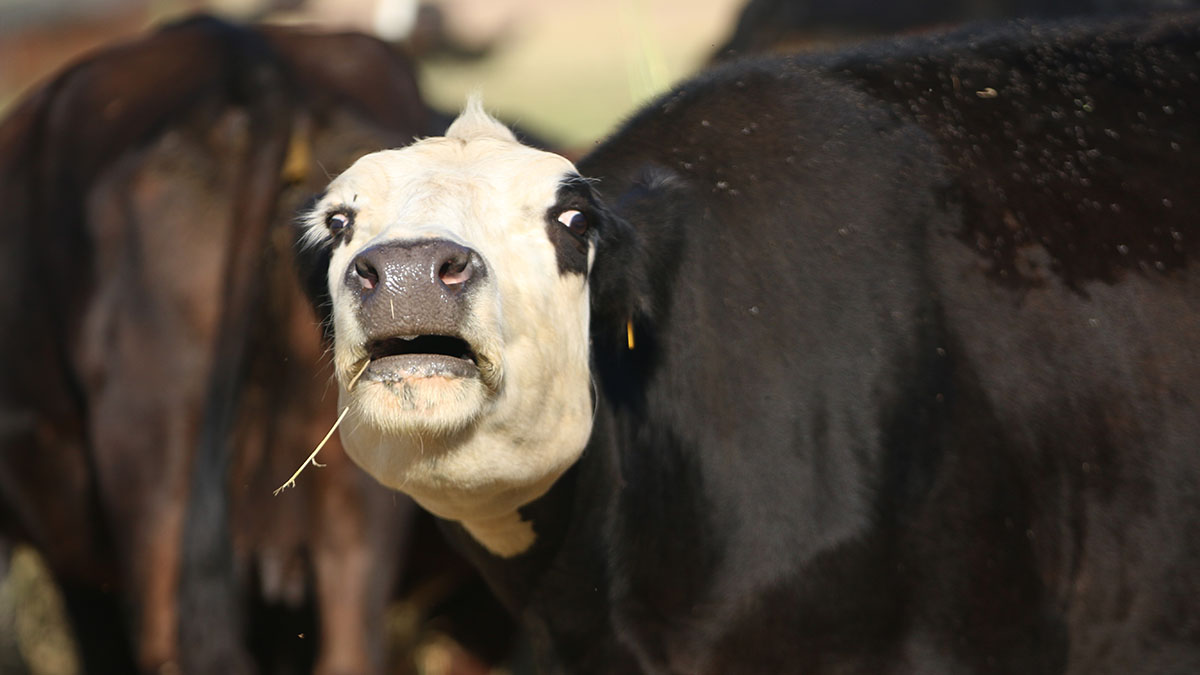
Rancher Dean Fish practices low-stress cattle handling. He moves slowly and quietly to make the cattle feel at ease. “We’re making sure that we’re effective in how we move cattle …through our facilities.,” Fish said. (Photo by Michelle Minahen/Cronkite News)
Growing up to respect sustainability
Fish was raised to be a sustainable rancher. His father, Ron Fish, was recognized as Range Manager of the Year by the Arizona Section of the Society for Range Management for 35 years of working the land his son now oversees.
Fish grew up on the ranch in Nogales and attended local schools and community college in Tucson. He received a bachelor’s degree in animal science from the University of Arizona and a master’s degree in reproductive physiology.
Fish then returned to Santa Cruz County and was an extension agent for the University of Arizona working with local 4-H groups, livestock, horticulture and other agricultural programs for 15 years.
When his dad retired five years ago, Fish had the opportunity to come back to the ranch and take his father’s place as manager. In the middle of these career changes, Fish completed a doctorate in reproductive physiology.
Fish, a husband and father of two, manages two areas: Santa Fe and Buena Vista. Ranch headquarters are located at Santa Fe where Fish hosts school field trips, agriculture literacy events and animal therapy sessions for individuals with disabilities.
“I grew up in the traditional culture” of ranching,” Fish said. “Now I’m able to combine the knowledge of seeing how other ranches work…implement them here, along with the science of technology with still keeping in mind that the traditional culture and the way we’ve done things. There’s some importance to that.”
“Dean is the kind of person you’d want to share a fence line with,” said Lauren Scheller Maehling, executive director of the Arizona Beef Council. Maehling, a rancher’s daughter who still helps run her family’s cattle ranch in California, has known Fish for years.
She said other Arizona cattle ranches admire Fish’s humble attitude and his use of science to improve his herd.
Heading into herd of the future
As the day winds down, Fish heads back to his home in town to be with his family. He ruminates on the future.
“I plan to be here for the rest of my career and – God-willing – that may be 20 to 30 years,” Fish said. “I’ve got to take care of the economics. I’ve got to take care of the environment. I’ve got to make sure that I’m doing the practices that are accepted by the public – that for my own conscience, that for my own morality, that I’m sure that I’m doing things the best I possibly can.”

Rancher Dean Fish took over the ranch on the Nogales border from his father. (Photo by Michelle Minahen/Cronkite News)

